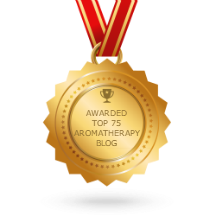What a diverse group we were... Hospice Nurses with little or no background in complimentary therapies, aromatherapists with absolutely no experience working with hospice patients, and all sorts of training and experience in between those extremes. We came together as a group, made new friends, and oh did we learn!
 |
| Class picture |
I've been going through the 'course book' and flagging new information, mostly comments that Madeleine made in class. I'm listing them here for my own use and reference, but perhaps you might find something helpful. (No, I'm not entering information from the presentation, or from her book. These are all comments made in the course of the four days.)
But first... (priorities, folks...) FOOD!
DINNER: If you like Italian food... especially if you like "gourmet" Italian food (this is far beyond Momma's Spaghetti and meatballs, folks) we highly recommend Carelli's of Boulder How highly? Eight of us ate there our first night. The same eight went back the following night. (We wanted the whole class to come, but it happened to be Prom Night and the restaurant couldn't accomodate us.) A different group of us went Tuesday night after class ended. Three out of four nights? We liked it!
Now, to my notes:
PHANTOM PAIN: Madeleine discussed two different methods of massaging limbs with "phantom pain" (ie, the limb has been amputated but still hurts.) In both cases she recommended the use of Sweet Marjoram CO2, for both physical and emotional spasms.
Some notes about different base products:
BORAGE CO2: extract for Neuropathy? Madeleine suggests using the Borage CO2 as 10% to 25% of the base oil in a Neuropathy blend because of its high level of Gamma Linoleic Acid.
SEA BUCKTHORN SEED CO2 Madeleine explained that the pigments in this oil are anti-oxidants. She recommends using it normally at a 2% dilution, with a maximum of 5%. In cases of extreme pain, where its anti-oxidant effect may prove helpful, she would go up to a 10% dilution. (Which makes me wonder about adding it at 5% to our Trauma Oil.)
CALOPHYLLUM INOPHYLLUM (Tamanu) Use for anything having to do with pain. (We are already seeing excellent results in its use for neuropathy.)
HYDROSOLS
Lavender Hydrosol: Just 10 mls of Lavender Hydrosol (1/3 fl oz) in a 3 or 4 gallon foot bath can ease pain and inflamation, as well as relax the patient.
Peppermint Hydrosol: She taught that peppermint stimulates the nerve endings in the skin that are sensitive to cold, and thus gives an instant sense of cooling. In cases of severe bruising, ice will slow circulation, hence slowing healing. For this purpose, Peppermint hydrosol, either spritzed on, or in a compress, may be more effective than ice.
WHITE CLAY (Kaolin): She says that 50 grams of white clay added to a warm bath is helpful for joint pain, as clay both stimulates circulation and helps detoxify waste products. I think we are all used to making face masks of clay, but whoever thought of just adding to a bath?
More to come. As time allows Christi and I will be adding these notes to our product descriptions on the website, but for now, I wanted them in one place so that we can both access them, and share them with you.


2 comments:
Thank you so much. Dealing with a son with recurring neuropathy or carpel tunnel. Drs can't agree.
Paula, if you'll enter 'neuropathy' in the search box for this blog you'll see two other articles about the subject.
Post a Comment